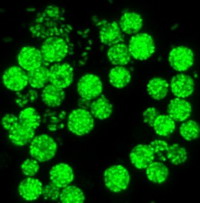American laboratories with deadliest germs and toxins have more than 100 accidents and missing shipments since 2003
American laboratories have experienced more than 100 accidents and missing shipments of deadliest germs and toxins since 2003.

No one died, and regulators said the public was never at risk during these incidents. But the documented cases reflect poorly on procedures and oversight at high-security labs, some of which work with organisms and poisons that can cause illnesses with no cure. In some cases, labs have failed to report accidents as required by law.
The mishaps include workers bitten or scratched by infected animals, skin cuts, needle sticks and more, according to a review by The Associated Press of confidential reports submitted to federal regulators. They describe accidents involving anthrax, bird flu virus, monkeypox and plague-causing bacteria at 44 labs in 24 states. More than two-dozen incidents were still under investigation.
The number of accidents has risen steadily. Through August, the most recent period covered in the reports obtained by the AP, labs reported 36 accidents and lost shipments during 2007 - nearly double the number reported during all of 2004.
Likewise, the number of labs approved by the government to handle the deadliest substances has nearly doubled to 409 since 2004, and there are now 15 of the highest-security labs. Labs are routinely inspected by federal regulators just once every three years, but accidents trigger interim inspections.
In a new report by congressional investigators, the Government Accountability Office said little is known about labs that are not federally funded or do not work with any of 72 dangerous substances the government monitors most closely.
"No single federal agency ... has the mission to track the overall number of these labs in the United States," said the GAO's report, expected to be released later this week. "Consequently, no agency is responsible for determining the risks associated with the proliferation of these labs."
The House Energy and Commerce investigations subcommittee plans hearings Thursday on the issue. The lab incidents have sparked bipartisan concern.
"It may be only a matter of time before our nation has a public health incident with potentially catastrophic results," said Rep. Bart Stupak, a Democrat and the panel's chairman.
The subcommittee's senior Republican, Ed Whitfield, added: "Currently, there is a hodgepodge system of federal oversight regulating the ... laboratories responsible for researching the deadliest germs and diseases. At Thursday's hearing, I expect to probe witnesses about how to improve oversight of these laboratories in a post 9-11 world."
Lab accidents have affected the outside world: Britain's health and safetyagencyconcluded there was a "strong probability" a leaking pipe at a British lab manufacturing vaccines for foot-and-mouth disease was the source of an outbreak of the illness in livestock earlier this year. Britain was forced to suspend exports of livestock, meat and milk products and destroy livestock. The disease does not infect humans.
Accidents are not the only concern. While medical experts consider it unlikely that a lab employee will become sick and infect others, these labs have strict rules to prevent anyone from stealing organisms or toxins and using them for bioterrorism.
The reports were so sensitive the Bush administration refused to release them under the Freedom of Information Act, citing an anti-bioterrorism law aimed at preventing terrorists from locating stockpiles of poisons and learning who handles them.
Among the previously undisclosed accidents:
-In Rockville, Maryland, ferret No. 992, inoculated with bird flu virus, bit a technician at Bioqual Inc. on the right thumb in July. The worker was placed on home quarantine for five days and directed to wear a mask to protect others.
-An Oklahoma State University lab in December could not account for a dead mouse inoculated with bacteria that causes joint pain, weakness, lymph node swelling and pneumonia. The rodent - one of 30 to be incinerated - was never found, but the lab said an employee "must have forgotten to remove the dead mouse from the cage" before the cage was sterilized.
-In Albuquerque, New Mexico, an employee at the Lovelace Respiratory Research Institute was bitten on the left hand by an infected monkey in September 2006. The animal was ill from an infection of bacteria that causes plague. "When the gloves were removed, the skin appeared to be broken in 2 or 3 places," the report said. The worker was referred to a doctor, but nothing more was disclosed.
-In Fort Collins, Colorado, a worker at a federal Centers for Disease Control and Prevention facility found, in January 2004, three broken vials of Russian spring-summer encephalitis virus. Wearing only a laboratory coat and gloves, he used tweezers to remove broken glass and moved the materials to a special container. The virus, a potential bio-warfare agent, could cause brain inflammation and is supposed to be handled in a lab requiring pressure suits that resemble space suits. The report did not say whether the worker became ill.
Other reports describe leaks of contaminated waste, dropped containers with cultures of bacteria and viruses, and defective seals on airtight containers. Some recount missing or lost shipments, including plague bacteria that was supposed to be delivered to the Armed Forces Institute of Pathology in 2003. The wayward plague shipment was discovered eventually in Belgium and incinerated safely.
Subscribe to Pravda.Ru Telegram channel, Facebook, RSS!


